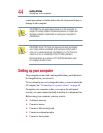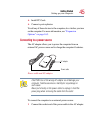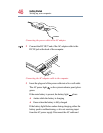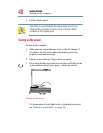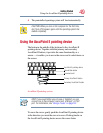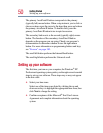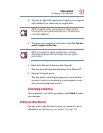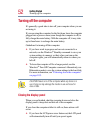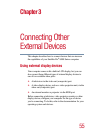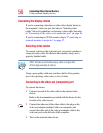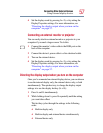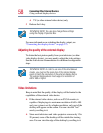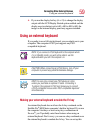
52
Getting Started
Turning off the computer
Turning off the computer
It’s generally a good idea to turn off your computer when you are
not using it.
If you are using the computer for the first time, leave the computer
plugged into a power source (even though the computer is off) to
fully charge the main battery. With the computer off, it may take
up to three hours to recharge the main battery.
Guidelines for turning off the computer:
❖ If you have work in progress and are not connected to a
network, use the Windows
®
Standby command to save your
system settings to memory so that, when you turn on the
computer again, you will automatically return to where you
left off.
❖ To leave the computer off for a longer period, use the
Windows
®
Turn Off Computer command. Alternatively, use
Hibernation mode to save the system settings to the hard disk.
For more information, see “Powering down the computer”
on page 105.
CAUTION: Never turn off the computer while any drive is in
use. Doing so may damage the media in use and result in
loss of data.
Closing the display panel
When you are finished, shut the computer down and close the
display panel to keep dust and dirt out of the computer.
If you close the computer while it is still on, these actions will
occur:
❖ If you have the LCD power-saver feature set, the LCD panel
will automatically turn off until you open it again.



